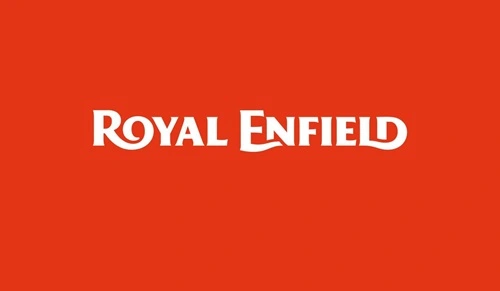Founded in 1901, Royal Enfield holds the distinction of being one of the oldest motorcycle brands in continuous production. Initially based in the UK, the company now operates from its headquarters in Chennai, India, under the ownership of Eicher Motors. Renowned for its classic, rugged, and reliable motorcycles, Royal Enfield has carved a niche for itself in the global mid-sized motorcycle market. In recent years, the brand has seen considerable growth both in India and abroad. This SWOT analysis examines Royal Enfield’s current standing and its potential future in a rapidly evolving motorcycle industry.

Current Overview of Royal Enfield
Royal Enfield continues to dominate the mid-sized motorcycle segment (250cc-750cc) in India, while also expanding its footprint globally, with exports to over 31 countries including the USA, UK, and Southeast Asia. With popular models like the Classic 350, Meteor, and Himalayan, the brand appeals to both adventure enthusiasts and urban commuters. Royal Enfield reported robust financial growth, thanks to rising demand, but it faces challenges from increasing competition and the global transition toward electric vehicles (EVs) and stricter emission regulations.
Strengths
1. Strong Brand Heritage: Royal Enfield’s rich legacy and iconic design have garnered a loyal fan base. The brand is deeply ingrained in motorcycling culture, with a unique appeal to riders who seek timeless, vintage designs.
2.Global Expansion: The company has successfully penetrated international markets, including North America, Europe, and Southeast Asia. Royal Enfield’s global footprint is supported by its export strategy and increasing demand for mid-sized motorcycles.
3. Product Diversification: Royal Enfield offers a diverse range of motorcycles, from cruisers to adventure bikes, ensuring that it appeals to a broad audience. Models like the Classic 350, Interceptor 650, and Himalayan have solidified its position across different riding segments.
4. Community Engagement: The company has fostered a strong rider community through events, clubs, and social media platforms. These initiatives help boost brand loyalty and customer engagement.
5. Support from Eicher Motors: Being part of Eicher Motors gives Royal Enfield access to vast resources and technical expertise, allowing it to invest in research and development (R&D), marketing, and expansion strategies.
Weaknesses
1. Quality Control Issues: Despite its growing popularity, Royal Enfield has been criticized for inconsistent build quality and frequent mechanical issues. These concerns have affected customer satisfaction, especially in international markets where expectations for reliability are higher.
2. Slow Product Innovation: Royal Enfield’s classic designs, while popular, have led to slower innovation. In an industry where technological advancements are crucial, the company’s reliance on traditional designs may hinder its ability to compete with more modernized brands.
3. Low Fuel Efficiency: Due to the large engine capacities of its motorcycles, Royal Enfield bikes are known for offering low mileage, which makes them less appealing to cost-conscious customers, particularly in markets with high fuel prices.
Opportunities
1. Expansion into Electric Vehicles (EVs): As the global automotive industry moves towards greener solutions, Royal Enfield has the opportunity to explore the electric motorcycle market. Leveraging its brand heritage and design expertise, it can develop electric models that appeal to eco-conscious consumers.
2. Growing Global Demand for Mid-Sized Motorcycles: The global two-wheeler market, particularly in developing regions like Southeast Asia and Africa, is expanding. Royal Enfield can further increase its presence in these markets by offering motorcycles tailored to local conditions and consumer preferences.
3. Diversification of Product Portfolio: There is an opportunity for Royal Enfield to introduce new models, such as lightweight commuter bikes or higher-performance motorcycles. Diversifying its product range would allow the company to appeal to a broader customer base and mitigate the risk of market saturation.
4. Rising Disposable Income: The increase in disposable income, especially in India and other emerging markets, presents an opportunity for Royal Enfield to capture a new segment of middle-class buyers who aspire to own premium motorcycles.
Threats
1. Intense Competition: Royal Enfield faces fierce competition from both domestic and international brands. Competitors like Jawa, Harley-Davidson, and Honda are vying for market share, offering similar products at competitive prices.
2. Rising Fuel Prices: Given the low fuel efficiency of Royal Enfield motorcycles, rising fuel prices could deter potential buyers, especially in price-sensitive markets. This poses a significant threat to its sales growth.
3. Regulatory Challenges: As governments across the globe introduce stricter emission and safety regulations, Royal Enfield may need to invest heavily in research and development to comply with these rules, potentially affecting profitability.
4. Social Media Criticism: The company has faced negative feedback on social media platforms due to issues like delayed deliveries and poor after-sales service. If not addressed, this could tarnish its brand image and customer trust.
Conclusion
Royal Enfield is well-positioned to continue its growth trajectory, leveraging its iconic brand, global expansion, and community-driven engagement. However, the company must address its weaknesses in quality control and product innovation while capitalizing on emerging opportunities in electric mobility and global markets. By navigating regulatory challenges and improving fuel efficiency, Royal Enfield can solidify its standing as a leading player in the motorcycle industry. Strategic diversification and enhanced customer service will be key to maintaining its competitive edge in the years ahead.